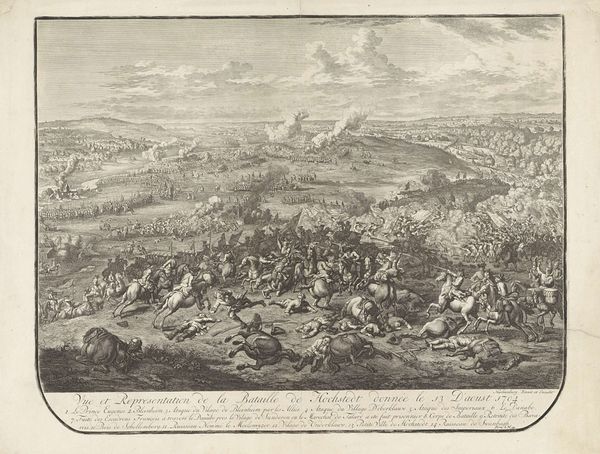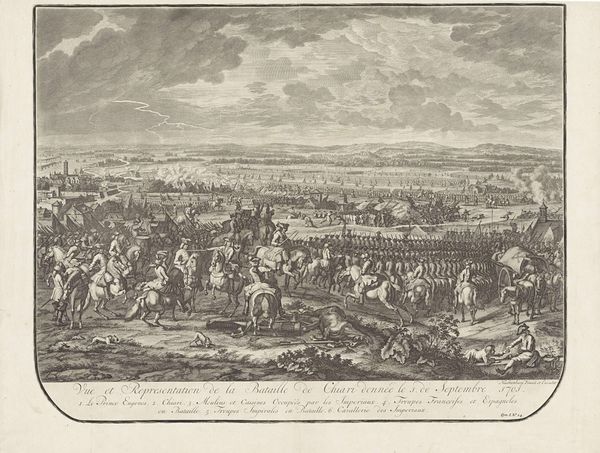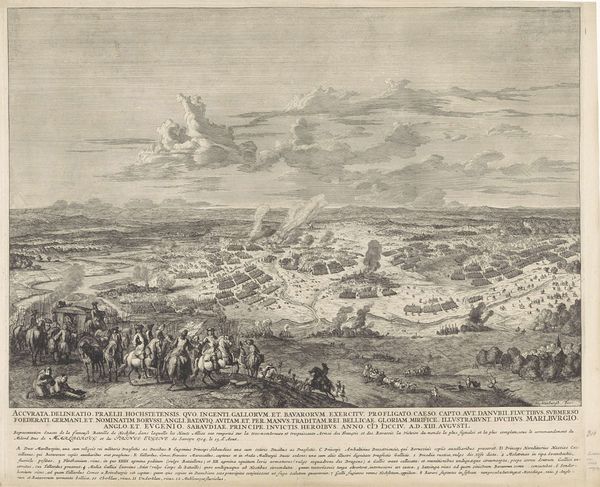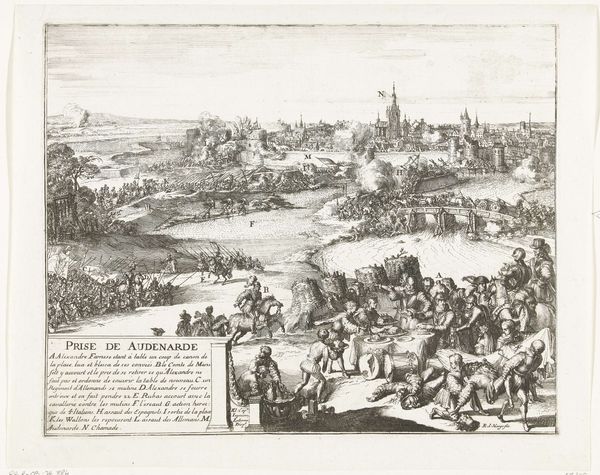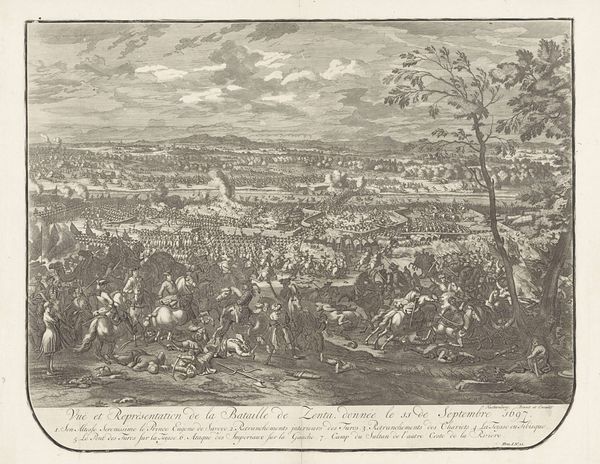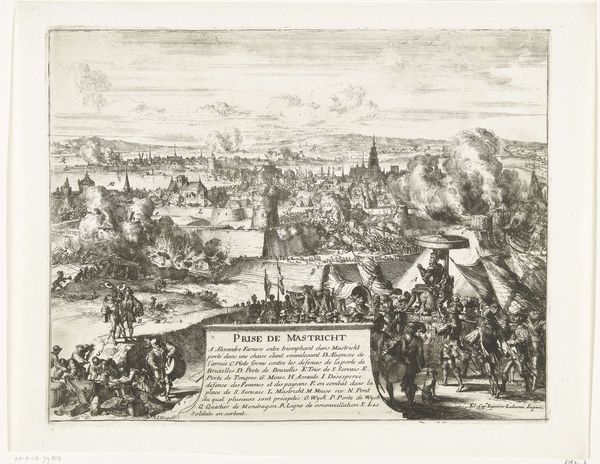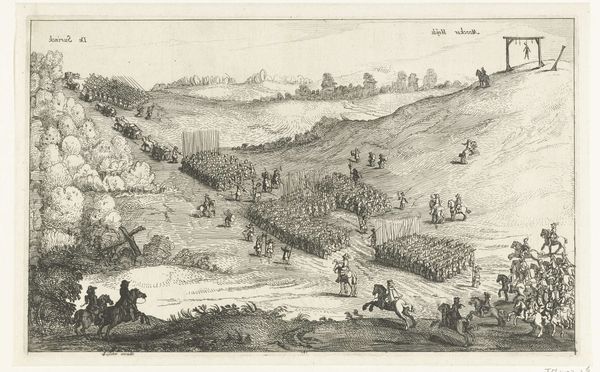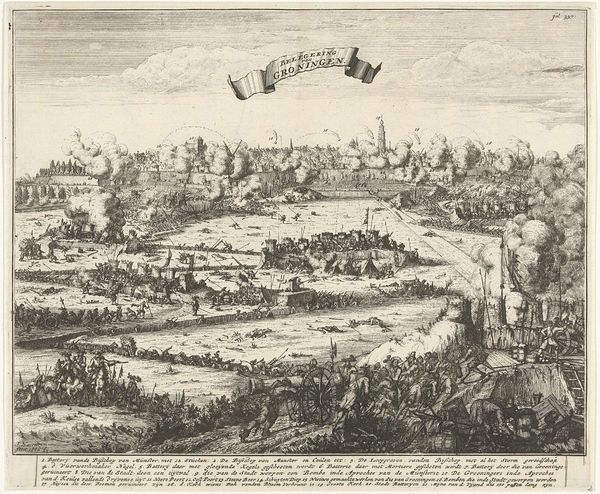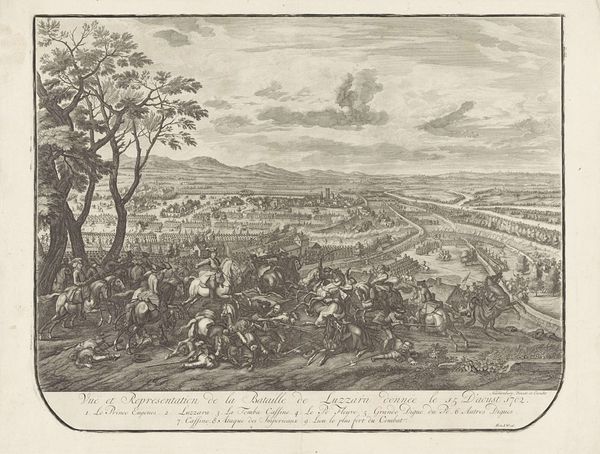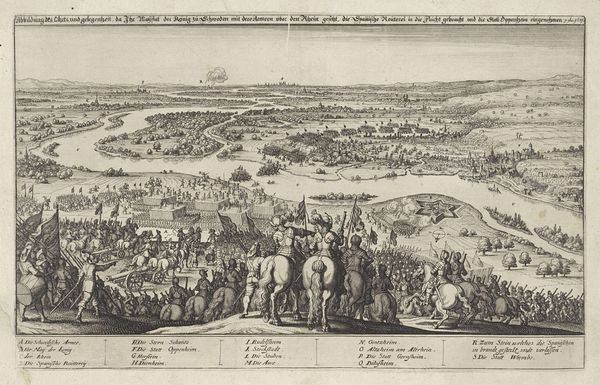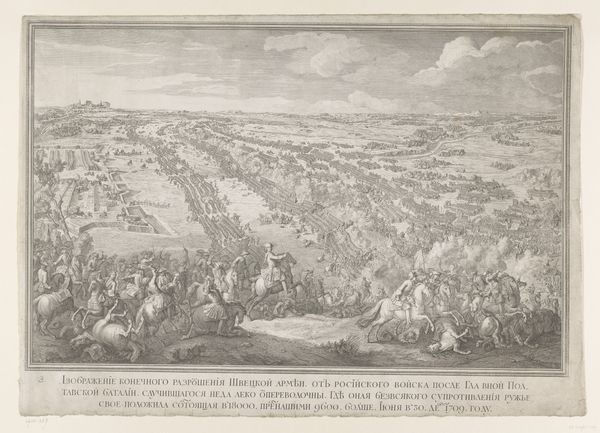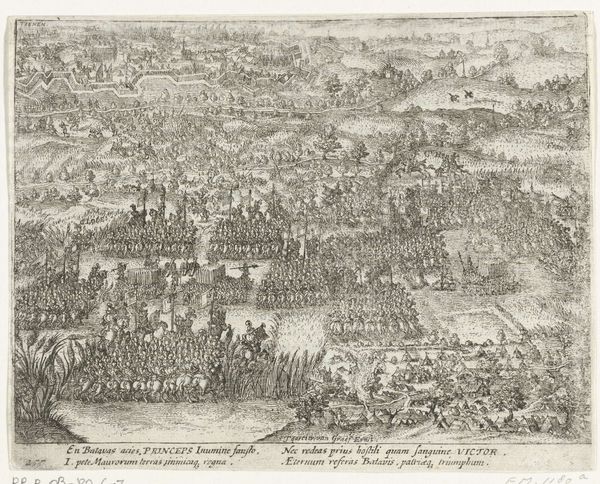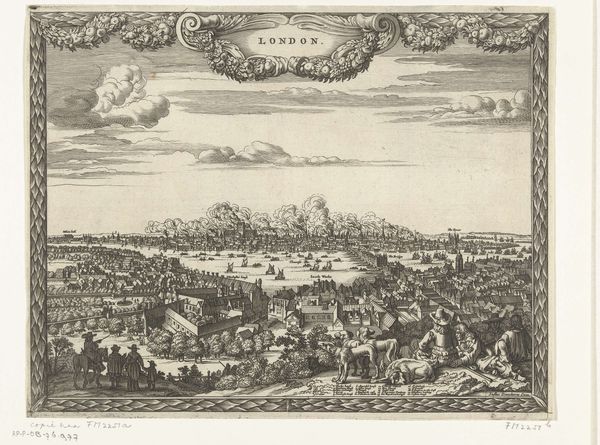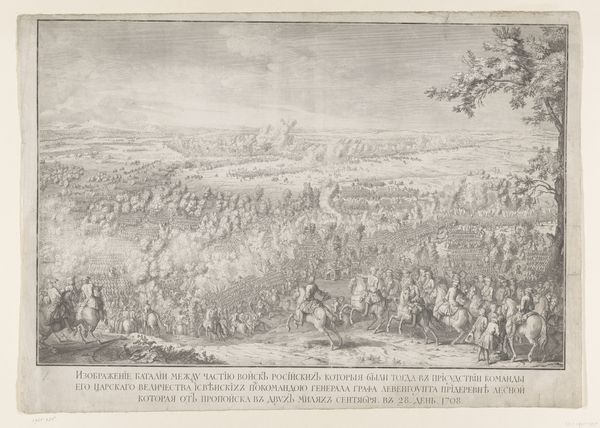
print, engraving
#
baroque
# print
#
landscape
#
history-painting
#
engraving
Dimensions: height 450 mm, width 570 mm
Copyright: Rijks Museum: Open Domain
Curator: This is "Battle of Malplaquet, 1709," an engraving made between 1727 and 1729 by Jan van Huchtenburg, held at the Rijksmuseum. Editor: It's a swirling scene of chaos. The eye's drawn from these fallen figures in the foreground to this distant, almost smoky, line of conflict in the back. What story is being told here? Curator: This image provides a lens through which we can examine how battles were both waged and consumed by the public in the 18th century. Notice the emphasis on a comprehensive view— a ‘Vue’ as the French title proclaims – of the entire battlefield. Editor: I do see that "Vue" in the title, almost like a map of sorts, not glorifying, but chronicling every area of combat, and not really heroic... it's a very broad view. Curator: Precisely. The print aimed to document the battle as an event, almost dispassionately, reflecting the evolving role of printmaking in disseminating information and shaping public perception of warfare. How might the details presented – the troop formations, the fallen soldiers – contribute to how viewers understood the political implications of this battle? Editor: Well, the volume of fallen humanizes what it would have meant to fight, a different perspective of something the populous normally does not have a point of view on, besides official communication. It seems to push an anti-war message for that era? Curator: That is one potential reading. Although commissioned battle scenes could often be used to shore up support, to rally people to a cause, sometimes these images had the opposite effect if they were rendered more truthfully. Considering it's a baroque engraving, it almost appears devoid of glorification. What does that make you think about Huchtenburg as an artist? Editor: I suppose it makes me rethink Baroque as a propaganda tool of elites, a notion I learned from class. Perhaps there was a burgeoning dissent and criticism via visual art emerging, too. Thank you for the perspective. Curator: Indeed. By examining historical artwork like this, we come to understand that visual communication rarely offers any singular point of view.
Comments
No comments
Be the first to comment and join the conversation on the ultimate creative platform.
